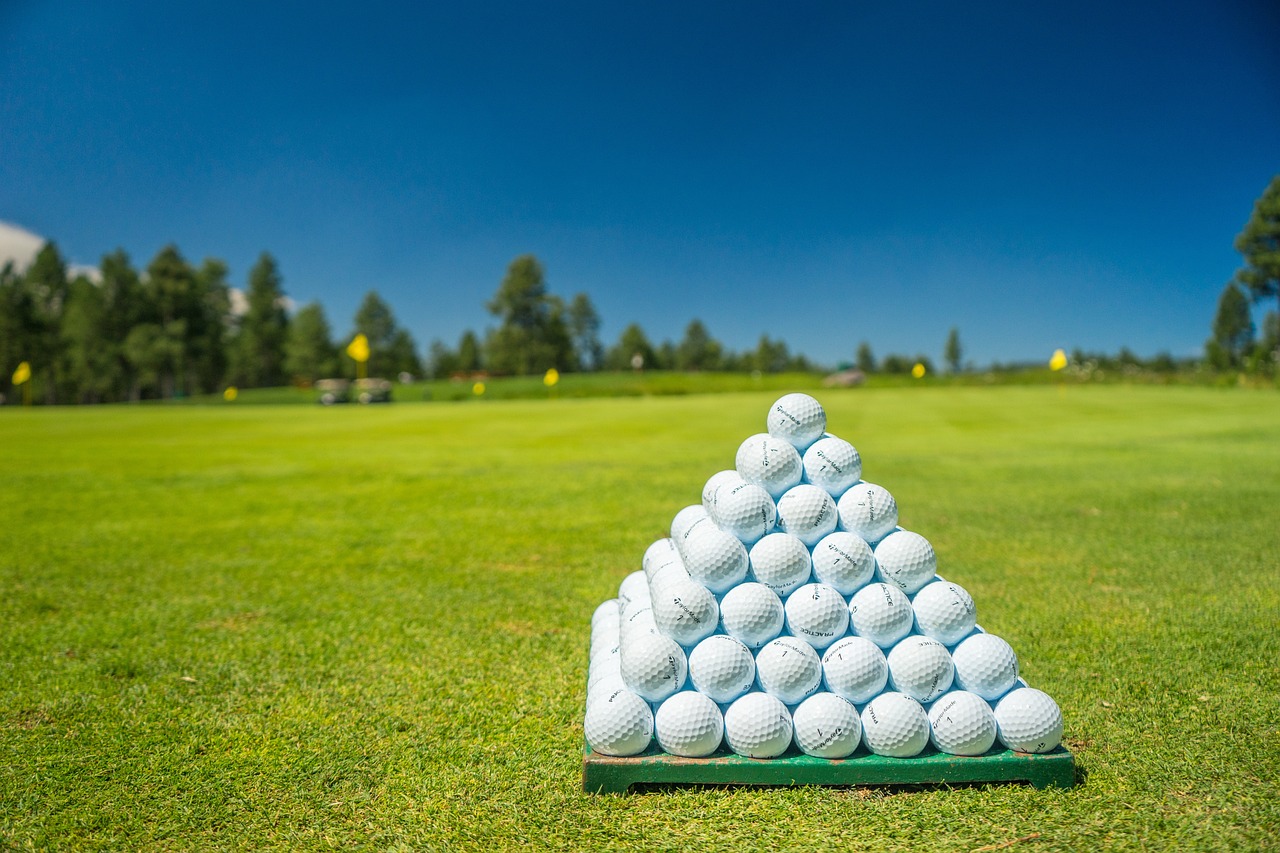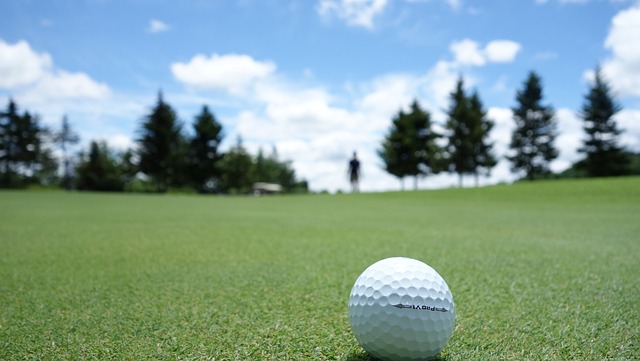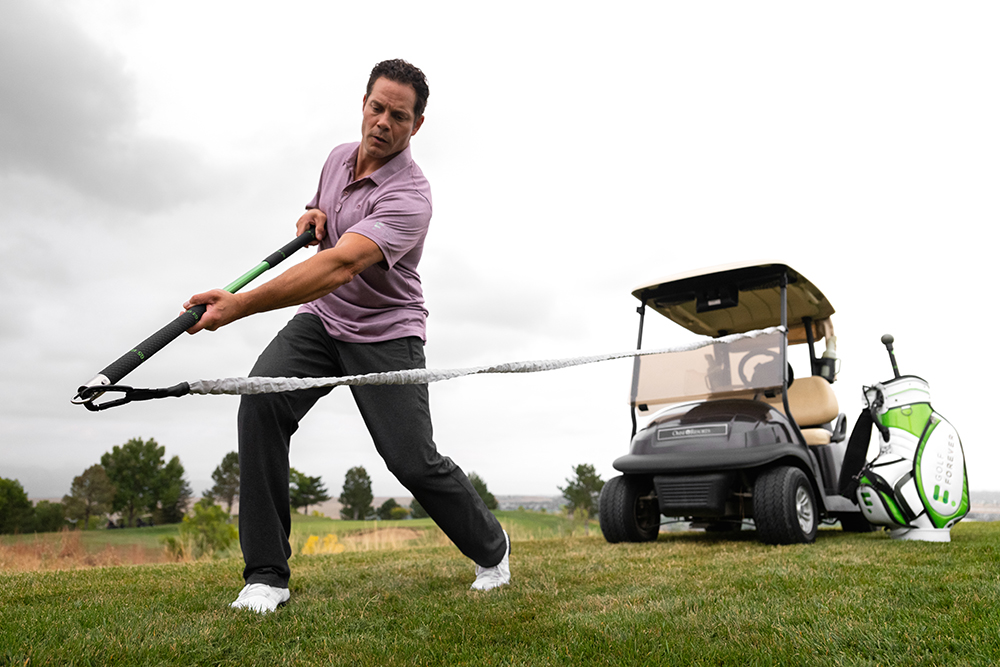
The Art Of Recovery Shots | Strategies For Getting Out Of Tough Situations
The Art Of Recovery Shots | Strategies For Getting Out Of Tough Situations – Imagine standing on a golf course, your heart pounding as you face an impossible situation. Your ball is nestled deep in the rough, covered by thick grass and bushes. Panic threatens to take over as you contemplate your next move. But fear not, because mastering the art of recovery shots can be your secret weapon in tough situations like these. In this comprehensive and detailed article, we will explore various strategies and techniques that will empower you to escape even the trickiest of golfing predicaments. Whether you’re a seasoned golfer or just starting out, these strategies will help you navigate the course with confidence and finesse. So grab your clubs and get ready to unlock the secrets to turning a difficult situation into a triumphant recovery.
The Importance of Recovery Shots
When it comes to playing golf, sometimes finding yourself in a tough situation on the course is inevitable. Luckily, with the right techniques and strategies, you can recover and salvage your round. Recovery shots are an essential part of the game, allowing you to navigate difficult lies, overcome obstacles, and even showcase your creativity. In this article, we will delve into the importance of recovery shots, explore various techniques, discuss special situations and strategies, highlight the mental game, and offer tips for practice and preparation. Whether you’re a beginner or an experienced golfer, understanding and mastering recovery shots can make a significant difference in your overall performance and enjoyment of the game.
Understanding the Need for Recovery Shots
Recovery shots are those shots you take to get back into a favorable position on the golf course after finding yourself in a challenging situation. These situations can range from being in the rough, facing an unfavorable lie, or encountering various obstacles such as trees, bunkers, or water hazards. Recovery shots are crucial because they allow you to regain control, minimize the damage, and give yourself the best chance at a decent score. Rather than simply accepting the adversity, recovery shots present an opportunity to strategize, be creative, and showcase your skill and determination.
Recovering from Difficult Lies
One of the most common situations where recovery shots come into play is when faced with difficult lies. Whether your ball has nestled itself in the deep rough, nestled against a tree root, or found its way into a divot on the fairway, recovery shots can help salvage the hole. When recovering from difficult lies, it’s essential to assess the lie carefully, as this will determine the technique and club selection you should employ. For example, when facing a ball nestled in the rough, a punch shot with a lower lofted club may be the best option to ensure a clean strike and advance the ball towards your intended target.
Analyzing the Golf Course
Before even stepping foot on the tee box, it’s crucial to analyze the golf course and identify potential trouble spots. By understanding the layout, you can strategically position your shots to avoid adversity in the first place. Taking note of water hazards, bunkers, and long rough areas can help you plan your shots accordingly, minimizing the need for recovery shots altogether. This proactive approach to course management can significantly improve your overall score and reduce stress during a round. Understanding the golf course and its unique challenges will allow you to play smarter, not harder.
Assessing Risk and Reward
When it comes to recovery shots, one must assess the risk and reward of each shot carefully. While it may be tempting to attempt a high-risk, high-reward shot to save strokes, sometimes playing it safe is the smarter option. Before attempting a recovery shot, consider the potential consequences of a failed attempt. Will it put you in an even worse position or potentially lead to a penalty? Alternatively, weigh the potential reward of successfully executing the shot and advancing towards the green. By evaluating risk and reward, you can make informed decisions and choose shots that give you the best chance for success.
Techniques for Recovery Shots
Now that we understand the importance of recovery shots, let’s delve into some essential techniques that can help you navigate tough situations on the golf course.
Club Selection for Recovery Shots
Choosing the right club is vital when it comes to recovery shots. Different situations call for different clubs, and it’s essential to understand their characteristics and how they will affect your shot. For example, when recovering from the rough, a club with more loft, such as a wedge, can help you launch the ball higher and clear any obstacles in your path. On the other hand, when faced with a punch shot under tree branches, a lower lofted club such as a seven iron may be more suitable to keep the ball low and avoid hitting any obstructions.
Adjusting Your Stance and Grip
In addition to club selection, adjusting your stance and grip can greatly impact your recovery shots’ success. For example, when facing an uphill lie where the ball is above your feet, it’s important to widen your stance to maintain balance and adjust your aim accordingly. Similarly, when dealing with a downhill lie, a narrower stance and an adjustment to your grip can help you strike the ball cleanly and control its trajectory. By becoming comfortable and adaptable with varying stances and grips, you’ll be better equipped to handle any recovery shot situation that arises.
Mastering the Punch Shot
The punch shot is a go-to technique for many golfers when trying to execute a recovery shot. This shot involves using a lower lofted club and a shorter swing to keep the ball trajectory low and controlled. The punch shot is especially useful when dealing with obstacles such as trees or when trying to keep the ball below the wind’s influence. By improving your punch shot technique, you can confidently navigate difficult lies and make the most out of challenging situations on the golf course.
Utilizing the Flop Shot
While the punch shot is ideal for low and controlled trajectories, the flop shot comes into play when you need to hit the ball high and land it softly on the green. The flop shot is often used when recovering from greenside bunkers or other hazards where height and precision are necessary. To execute a successful flop shot, it’s important to open the clubface, grip down on the club, and make a sweeping, accelerated swing. With practice and confidence, the flop shot can become a valuable recovery shot in your arsenal.
The Art of the Bump-and-Run
Another valuable recovery shot technique to master is the bump-and-run. This shot is ideal when you have a clear path to the green with no immediate obstacles. The bump-and-run is executed with a low lofted club, such as a pitching wedge or 9-iron, where you play the ball back in your stance and allow it to run towards the green. By utilizing the bump-and-run, you can effectively navigate challenging lies and maximize your chances of getting close to the hole.
Special Situations and Strategies
While the techniques mentioned above are essential for general recovery shots, certain special situations require specific strategies to overcome.
Recovering from the Rough
The rough can be a challenging place to find yourself, with thick grasses and unpredictable lies. When recovering from the rough, it’s important to consider the impact the grass will have on the clubface and the ball’s trajectory. Generally, it is recommended to use a more lofted club, such as a wedge, which can help launch the ball higher and minimize the effect of the rough. Additionally, ensuring a clean strike and maintaining a consistent swing tempo will increase your chances of successfully recovering from the rough.
Navigating Bunkers with Precision
Bunkers are notorious for testing golfers’ skills and can often leave players feeling anxious. However, with the right strategy and technique, bunkers can be successfully navigated. When faced with a bunker shot, it’s important to open the clubface, take a slightly wider stance, and position the ball towards the front of the stance. By using an explosive yet controlled swing, you can effectively splash the ball out of the bunker and onto the green. Practicing bunker shots regularly and becoming comfortable with the necessary adjustments will greatly improve your ability to recover from these challenging hazards.
Dealing with Unfavorable Lies
Sometimes, despite your best efforts, you may end up with an unfavorable lie that seems nearly impossible to recover from. In these situations, it’s crucial to stay level-headed, assess the lie carefully, and choose the best course of action. For example, if you find yourself in a divot on the fairway, it may be best to aim for a safe target rather than attempting an overly ambitious recovery shot. By accepting the limitations of your lie and making smart decisions, you can minimize the damage and avoid compounding errors.
Overcoming Obstacles on the Course
Obstacles such as trees, water hazards, and out of bounds areas can present significant challenges during a round of golf. However, with a clear strategy and proper execution, these obstacles can be overcome. When facing trees, it’s important to assess the available options and choose the one that gives you the best chance of advancing towards your target. This may involve playing a safer shot to get back into play rather than attempting a low-percentage shot through a tight gap. When dealing with water hazards, prioritizing accuracy over distance can help reduce the risk of finding yourself in more trouble. By carefully considering the obstacles and planning your shots accordingly, you can effectively navigate the course and recover from challenging situations.
Playing Recovery Shots in Windy Conditions
Windy conditions can further complicate recovery shots, as the wind can significantly affect ball flight and control. When playing in the wind, it’s crucial to choose shots that minimize the wind’s impact and allow for better control. This may involve playing lower shots with less loft or deliberately shaping shots against or with the wind to take advantage of its influence. By understanding the wind’s direction and speed and adjusting your strategy accordingly, you can effectively recover from challenging situations and maintain control over your shots.
Mental Game for Recovery Shots
In addition to the physical techniques and strategies, the mental aspect of recovery shots plays a vital role in executing successful shots.
Staying Calm and Focused in Tough Situations
Recovery shots often come during challenging moments on the golf course, testing your ability to stay calm and focused. It’s important to approach these situations with a positive mindset and approach each shot with confidence. By acknowledging that recovery shots are a normal part of the game and adopting a problem-solving mentality, you can overcome adversity and set yourself up for success.
Visualizing and Strategizing for Recovery
Visualization is a powerful tool when it comes to recovery shots. Before executing a recovery shot, take a moment to visualize the shot in your mind’s eye. Picture the trajectory, the flight of the ball, and the desired outcome. Additionally, strategizing for recovery requires carefully analyzing the situation, weighing the options, and choosing the shot that gives you the best chance of success. By visualizing and strategizing, you can strengthen your mental focus and increase the likelihood of executing a successful recovery shot.
Managing Expectations and Confidence
Having realistic expectations and maintaining confidence are crucial components of the mental game when it comes to recovery shots. It’s important to understand that recovery shots may not always result in the perfect outcome, and that’s okay. Managing expectations and accepting that not every shot will be flawless can alleviate pressure and allow you to focus on executing to the best of your ability. Maintaining confidence, even in challenging situations, will help you approach recovery shots with a positive mindset and increase your chances of executing successful shots.
Learning from Mistakes and Moving On
Mistakes are inevitable in golf, especially when it comes to recovery shots. Instead of dwelling on past mistakes, use them as opportunities for growth and learning. Reflect on what went wrong and identify areas for improvement. By adopting a growth mindset and treating each shot as a learning experience, you can continually refine your recovery shot skills and become more resilient on the golf course.
Practice and Preparation for Recovery Shots
Recovery shots require practice and preparation to build confidence and hone your skills. By incorporating targeted practice routines and simulating difficult situations, you can better prepare yourself for the challenges you may face on the golf course.
Creating a Practice Routine for Recovery Shots
To improve your recovery shot skills, it’s important to develop a practice routine that specifically targets these shots. Set aside dedicated practice sessions where you focus on different recovery shot techniques, such as punch shots, flop shots, and the bump-and-run. By regularly practicing these shots, you can develop muscle memory, improve your technique, and gain confidence in your ability to execute recovery shots effectively.
Simulating Difficult Situations on the Range
While the driving range provides valuable opportunities to work on your swing and overall ball striking, it’s essential to simulate difficult situations to prepare for recovery shots. Create targets or obstacles that you may encounter on the golf course, such as bunkers, trees, or uneven lies, and practice executing recovery shots from these scenarios. By replicating challenging situations, you can improve your ability to adapt to different circumstances and make the most out of your recovery shots during a round.
Incorporating Recovery Shots into Course Management
Course management goes hand in hand with recovery shots, as it involves strategic planning and decision-making throughout the round. Instead of solely focusing on the perfect shot, consider how potential recovery shots may come into play for each hole. This allows you to approach each shot with a contingency plan in mind, positioning yourself for a successful recovery if necessary. By incorporating recovery shots into your course management, you can proactively navigate the course and set yourself up for improved performance.
Developing a Pre-Shot Routine for Recovery Shots
A consistent pre-shot routine is crucial for maintaining focus and preparing yourself mentally and physically before each recovery shot. Developing a routine that you follow consistently for recovery shots helps build confidence and consistency. Include elements such as visualizing the shot, addressing the ball, taking practice swings, and ensuring proper alignment. By incorporating a pre-shot routine for recovery shots, you can establish a rhythm and prepare yourself to execute quality shots even in challenging situations.
Golf Course Management for Recovery Shots
Effective golf course management involves understanding the layout and unique challenges of the course and employing strategies to make well-informed decisions.
Strategizing Your Way Around the Course
Strategizing your way around the course requires careful consideration of your strengths, weaknesses, and the layout of each hole. By identifying the trouble spots and hazards, you can tailor your club selection and shot execution accordingly, minimizing the need for recovery shots. Additionally, studying the course’s slope and elevation changes can help you understand the potential outcomes of your shots and make smarter decisions. By taking a strategic approach to the course, you can maximize your chances of success and reduce the need for recovery shots.
Course Strategy Based on Skill Level
It’s important to adapt your course strategy based on your skill level. If you’re a beginner or have limited experience, taking fewer risks and focusing on safe options may be the more prudent approach. As your skills improve, you can gradually incorporate more aggressive shots and techniques into your game, increasing the potential reward while accepting a higher degree of risk. By tailoring your course strategy to your skill level, you can play to your strengths, build confidence, and gradually expand your recovery shot repertoire.
Identifying High-Risk Areas and Safe Options
Part of effective course management for recovery shots involves identifying high-risk areas and safe options. For example, if the fairway is guarded by water hazards or a dense cluster of trees, it might be wiser to play a more conservative shot and take a safe route. By recognizing and respecting the potential risks, you can minimize the need for recovery shots and reduce the chances of compounding errors. Identifying safe options allows you to maintain control over your shots and increase the likelihood of finding yourself in favorable positions on the course.
Knowing When to Take Risks and When to Play Conservative
Determining when to take risks and when to play conservative shots is a skill that comes with experience and knowledge of your abilities.

Analyzing Professional Recovery Shots
To further develop your recovery shot skills and understand their significance in the game of golf, analyzing professional golfers’ techniques can be extremely insightful.
Studying Professional Golfers’ Techniques
Professional golfers have honed their skills and developed an array of recovery shot techniques that can inspire and teach us valuable lessons. Take the time to study professionals during tournaments and observe how they approach recovery shots. Pay attention to their club selection, shot execution, and decision-making process. By studying the techniques of professionals, you can gain new perspectives, learn different styles, and adapt their strategies to your own game.
Learning from Successful Recovery Shots
Successful recovery shots by professional golfers can serve as excellent learning opportunities. Pay attention to the shots that professionals execute successfully and the strategies they employ. Analyze how they adjust their stance, select the appropriate club, and make sound decisions to recover from difficult lies. By studying successful recovery shots, you can gain valuable insights that can positively impact your own recovery shot abilities on the golf course.
Identifying Patterns and Strategies
By closely observing professional golfers’ recovery shots, you can identify patterns and strategies that are consistently effective. For example, you may notice that they often opt for the safe option rather than taking unnecessary risks. Additionally, patterns may emerge in club selection based on the difficulty of the lie or the type of obstacle being faced. By identifying these patterns and strategies, you can incorporate them into your own game and increase your chances of executing successful recovery shots.
Analyzing Recovery Shots in Tournaments and Major Championships
Watching recovery shots play out in high-stakes tournaments and major championships highlights the importance of these shots in determining the outcome of the game. Observe how professionals handle pressure-filled situations and execute recovery shots under intense scrutiny. By analyzing recovery shots in tournaments, you can gain insights into the mental and strategic aspects of the game, further enhancing your own recovery shot abilities.
Equipment and Gear for Recovery Shots
While recovery shots largely rely on technique and strategy, having the right equipment and gear can also contribute to their success.
Choosing the Right Golf Clubs for Recovery Shots
Having a well-rounded set of golf clubs is fundamental when it comes to executing recovery shots effectively. Ensure that your bag includes the necessary clubs for specific recovery shots, such as wedges for shots from the rough or sand. Additionally, having a variety of hybrid clubs and fairway woods can provide versatility when distance and accuracy are paramount. By choosing the right golf clubs for recovery shots, you can have more control over your shots and increase the likelihood of recovering successfully.
Utilizing Specialty Clubs and Wedges
Specialty clubs and wedges designed for specific recovery shots can be valuable additions to your golf bag. For example, a lob wedge can greatly assist in executing flop shots with precision and finesse. Similarly, a utility club or hybrid can provide versatility and control when navigating challenging lies. By incorporating specialty clubs and wedges into your arsenal, you can be better equipped to handle a wide range of recovery shot situations on the golf course.
Understanding Ball Flight and Spin
Understanding ball flight and spin is crucial for recovery shots, as they play a significant role in how the ball reacts after impact. Different clubs and swing techniques can produce varying ball flights and spins, and being aware of these characteristics can help you plan and execute recovery shots more effectively. For example, backspin can help stop the ball quickly on the green, while a draw or fade can help you shape the shot around obstacles. By developing an understanding of ball flight and spin, you can add another layer of control to your recovery shots.
Considering Alternative Golf Balls for Better Recovery Shots
The choice of golf ball can also impact the success of your recovery shots. Consider experimenting with different types of golf balls that offer specific characteristics, such as enhanced spin or distance control. Some golf balls are designed to optimize performance in certain areas, such as around the green or in tricky lies. By considering alternative golf balls, you can find one that suits your playing style and aids in executing recovery shots with greater precision.
Etiquette and Sportsmanship for Recovery Shots
Recovery shots not only test your physical skills but also provide an opportunity to exhibit good etiquette and sportsmanship on the golf course.
Respecting Other Players on the Course
When faced with recovery shots, it’s important to remain aware of other players on the course and be considerate of their experience. Ensure that you do not delay play excessively and allow faster groups to play through if necessary. By respecting other players on the course, you can maintain a positive atmosphere and contribute to the enjoyment of the game for everyone.
Maintaining Pace of Play during Recovery Shots
Recovery shots have the potential to slow down the pace of play if not executed efficiently. To maintain a good pace of play, be prepared before it’s your turn to hit your shot.

Being Honest about the Outcome of Recovery Shots
Honesty is integral to the game of golf, and this extends to recovery shots as well. Be honest about the outcome of your recovery shots, including any penalties or drops that may be necessary. By adhering to the rules and maintaining integrity, you contribute to the fairness and sportsmanship of the game.
Following Golf Etiquette in Challenging Situations
Challenging situations on the golf course, often requiring recovery shots, call for heightened adherence to golf etiquette. Ensure that you repair divots, replace or smooth out footprints in bunkers, and fix ball marks on the green. Additionally, be mindful of noise and distractions that may affect other players during their shots.

Final Thoughts
Recovery shots truly embody the art and science of the game of golf. By understanding their importance and implementing the appropriate techniques, strategies, and mental approaches, you can effectively navigate challenging situations, salvage your round, and elevate your overall performance. Remember to practice regularly, adopt a proactive approach to course management, and maintain a positive mindset when facing adversity. With time, experience, and continuous improvement, your recovery shot skills will become a valuable asset, allowing you to embrace the challenge and enjoy the art of recovery shots on the golf course.





